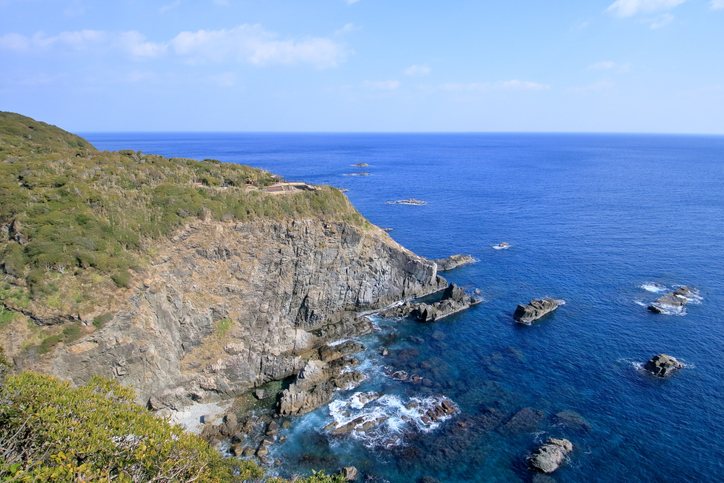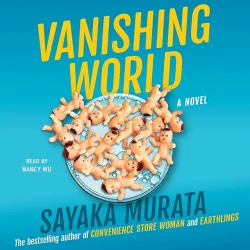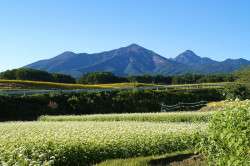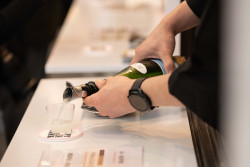
May 1, 2003
Cape Ashizuri Travel Guide: Temples, Typhoons and Ocean Views at Shikoku’s Southern Tip
Simon Rowe braves the storms and heads down to Shikoku’s “Typhoon Ginza,” Cape Ashizuri.
By Metropolis
Originally published on metropolis.co.jp in May 2003. Updated April 2025.
Key Largo, the 1948 thriller starring Humphrey Bogart, probably isn’t on heavy rotation down in Shikoku. But if you head to Cape Ashizuri—the rugged, wind-whipped southern tip of Kochi Prefecture—you might find yourself caught in a scene just as dramatic.
In the film, a storm traps Bogart in a coastal hotel with a gang of gangsters. At Cape Ashizuri, it’s not organized crime, but typhoons, quirky locals and the occasional wayward henro pilgrim that may keep you grounded for a few extra days. And with a view like this, that’s not such a bad thing.
This updated Cape Ashizuri travel guide will walk you through the region’s top experiences—whether you’re looking for windswept ocean cliffs, Buddhist temples, or a place to unplug and recharge in the quiet corners of Shikoku.
A Room with a View—and Character
Despite its remote location, Cape Ashizuri has no shortage of places to stay. The headland is dotted with minshuku—family-run guesthouses that usually come with homecooked meals and a front-row seat to the Pacific.
I stayed at Minshuku Hassen (八扇), a no-frills lodging perched above the sea. The name can mean either “Eight Fans” or “Eight Thousand,” depending on how you read it, and both somehow fit—the wind never stops blowing, and the ocean stretches out endlessly before you. Rooms now go for around ¥6,800 per person, per night, including two meals.
The guesthouse hasn’t changed much since the early 2000s: creaky floors, a slightly faded bathroom in duck-egg blue, and a futon that sleeps more like a rice mat. But the view and the morning miso soup more than make up for the retro charm. The owner, an elderly woman who still insists on being called oba-chan, keeps things running with a mix of tough love and endless green tea.
Typhoon Ginza
Between June and September, this corner of Shikoku gets walloped by more than its fair share of typhoons. Locals even joke that their coastline is the “Typhoon Ginza” of Japan. Homes here are built like bunkers, with clay-tile roofs and reinforced shutters.
That said, don’t let the weather scare you off—many days are calm and balmy, perfect for hiking, surfing or just watching the waves crash below. But when a storm does roll in, you’ll quickly see why the buildings are built to last. It’s all part of the region’s wild appeal, which this Cape Ashizuri travel guide aims to help you navigate with confidence.
Following the Trail of “John Man”
One of the area’s biggest draws is the larger-than-life statue of Nakahama Manjiro, known locally as “John Man.” In 1841, he was shipwrecked off the coast as a young fisherman and rescued by an American whaler. He went on to live in Massachusetts, learn English, and become the first Japanese person to live in the United States. He later returned to Japan and played a key role in reopening the country to the world.
The statue stands watch over the cape, looking out to sea from a sturdy granite pedestal. Below, local fishermen shuttle tourists to offshore rocks to try their luck with the rod—just don’t get caught out there if the winds shift.
Temples, Trails and Travelers
Cape Ashizuri is also home to Kongofuku-ji, the 38th stop on the Shikoku 88 Temple Pilgrimage. The temple, dating back to the 17th century, draws modern-day pilgrims (henro) hoping to cleanse themselves of the 88 human vices. Clad in white vests and straw hats, they crisscross the island on foot, often for weeks at a time. If you spot a group pouring out of the temple gates, they’re likely headed for a hearty seafood meal or a soft-serve cone from the nearby rest house.
The hiking trails around the cape are steep, stunning, and occasionally sobering. Signs along the cliffside ask visitors to reconsider any dark thoughts, as the bluffs have long had a reputation as a suicide spot. Still, the natural beauty here—fan palms, bamboo groves, the ceaseless ocean—is a powerful reminder of life’s vastness and complexity.
Getting There (2025 Update)
- By Plane: Flights from Tokyo Haneda to Kochi Ryoma Airport take about 1 hour 20 minutes. From there, take a bus (~40 minutes) to Kochi Station.
- By Train: The Tokaido-Sanyo Shinkansen from Tokyo to Okayama takes about 3 hours 20 minutes. Transfer to the JR Dosan Line for a limited express to Kochi Station (around 2.5 hours).
- To Ashizuri: From Kochi Station, take the Tosa Kuroshio Railway to Nakamura Station (1 hour 45 minutes), then transfer to a local bus to Ashizuri Point (about 2 hours).
- By Car: Rental cars are available from major providers like Toyota Rent-a-Car and Nissan Rent-a-Car near Kochi Station and Kochi Airport. A car is the most flexible option if you’re planning to explore the coastline at your own pace.
Where to Stay
- Minshuku Hassen (八扇): A rustic, sea-view guesthouse located just 200m from the village post office. Around ¥6,800pp/pn including meals. Call 0880-88-0941.
- Ashizuri Kokuminshukusha: A cozy inn near John Manjiro’s statue and the tourist info center. Rooms start at ¥6,600pp/pn with meals. Call 0880-88-0301.
- More options: For up-to-date listings and English support, stop by the tourist information center outside Kochi Station (Tel: 088-882-7777; open daily 9am–5pm).







